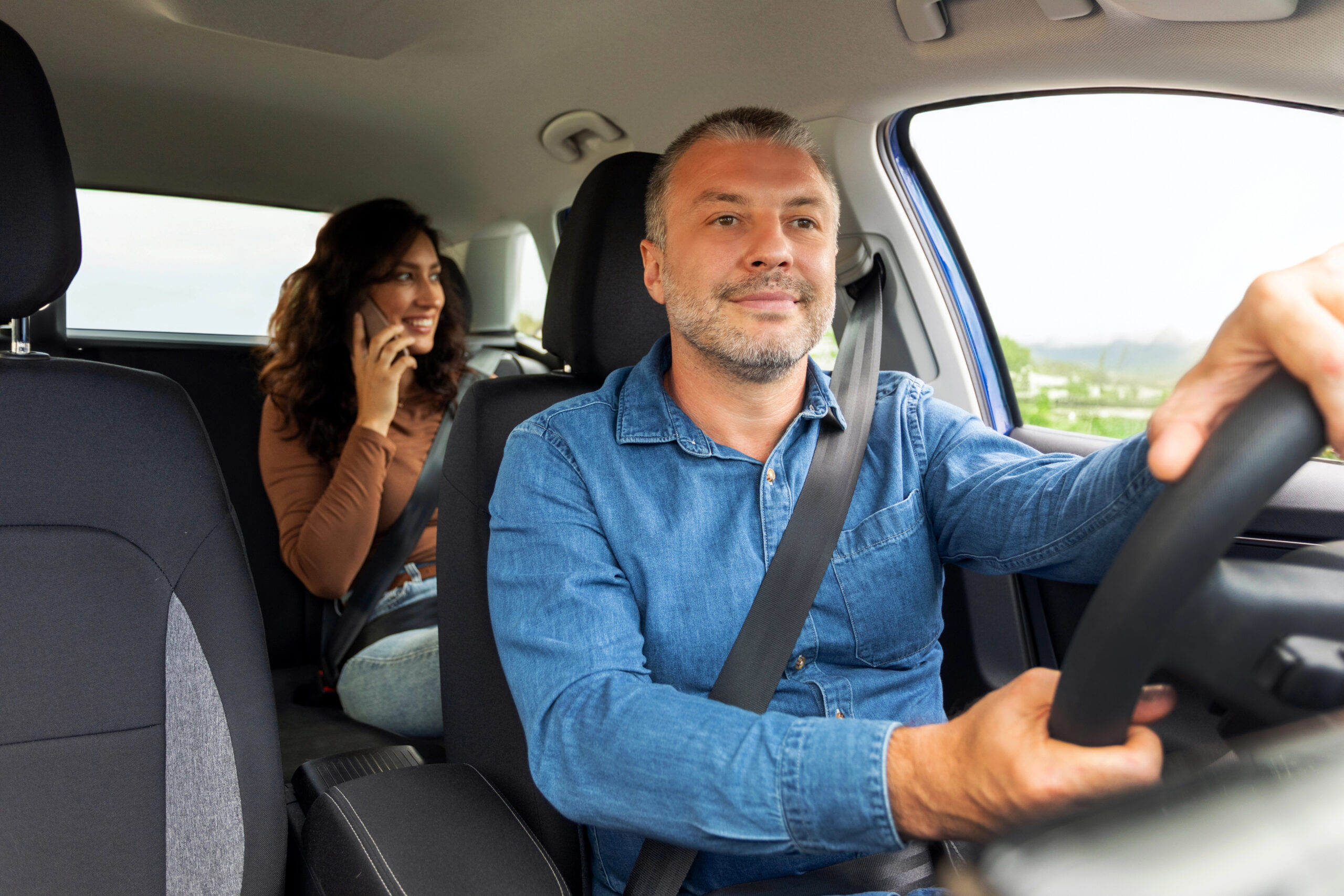Rideshare insurance is a car insurance coverage you add to a personal auto policy. It covers the gap in coverage between your personal auto insurance policy and the commercial policy from your rideshare company.
Do I need rideshare insurance?
You need rideshare insurance if you use your personal vehicle to work for a rideshare company, like Uber, Lyft or Doordash. Without it, most personal auto policies won’t cover using your vehicle for business purposes. And if you don’t inform your insurer that you drive for a rideshare company, they could cancel your policy.
While rideshare companies are required to provide basic commercial auto insurance in most states, it likely won’t cover you in all scenarios. It typically only covers you when you’re en route to pick up a customer or when you’re driving a passenger. In some circumstances, it may provide minimal liability insurance while the app is on and you’re waiting for a request.
If rideshare insurance isn’t available where you live, you may need a commercial auto insurance policy.
What rideshare insurance covers
Depending on your state and insurer, your rideshare insurance may cover:
- Damage to your vehicle if your personal policy includes comprehensive and collision coverage and you’re in an accident while logged into a rideshare company’s app and waiting for a request.
- Higher liability limits while waiting for a rideshare request, depending on your personal policy’s liability limits.
- A portion of your rideshare company’s deductible if you’re in an accident while on the clock.
Important: Be sure to check with your auto insurer and rideshare company to get a full understanding of what is covered, as coverage can vary by state, insurer and rideshare company.
The following table illustrates coverage differences between a personal and commercial rideshare insurance policy, and shows how rideshare insurance can fill in gaps.
| Personal car insurance | Rideshare insurance | Rideshare company’s commercial insurance |
|---|---|---|
| Covers personal vehicle use only. | Covers you and your car when you’re logged into a rideshare app and waiting for a request. | Offers limited coverage for others’ injuries or property damage if you cause an accident while waiting for a request. Offers more extensive coverage while you’re actively transporting passengers or making a delivery. |
| Includes at least your state’s minimum requirements and may include higher limits if you’ve added optional coverages. | May include liability insurance, uninsured/underinsured motorist, comprehensive, collision, medpay and PIP, depending on your state and insurer. | Typically includes liability, property damage and uninsured/underinsured motorist coverage. |
How car insurance for Uber and Lyft drivers works
Rideshare companies like Uber and Lyft require drivers to carry a personal car insurance policy. The rideshare company offers a commercial policy that is in effect when you’re picking up and transporting passengers.
Uber and Lyft use a system of “periods” to determine when coverage is in effect. Here’s how these periods work:
- Period 0: The rideshare app is off, and you’re using the car for personal activities, like running errands. Your personal policy is in effect.
- Period 1: The rideshare app is on and you’re waiting to be paired with a passenger. Your rideshare company’s limited liability-only coverage is in effect. If your personal policy includes rideshare insurance, it is also in effect.
- Period 2: You’re matched with a rider and are en route to pick them up. Your rideshare company’s commercial policy is in effect.
- Period 3: The passenger is in your vehicle and you’re bringing them to their destination. Your rideshare company’s commercial policy is in effect.
Uber and Lyft coverage types and limits
Uber and Lyft offer insurance to their drivers, but the coverage is limited and varies in amount.
While waiting for a ride request
In most states, both Uber and Lyft offer liability car insurance while the app is on and you’re waiting for a ride request. These limits are:
- $50,000 in bodily injury liability per person.
- $100,000 in bodily injury liability per accident.
- $25,000 in property damage liability per accident.
Bodily injury liability insurance pays for injuries you cause in an accident, including medical and funeral expenses. Property damage liability insurance covers property damage you cause. Neither of these coverages cover you or your vehicle.
While you’re matched with or transporting a passenger
Both Uber and Lyft offer at least $1 million dollars of third-party auto liability coverage when you’re matched with a passenger or bringing them to their destination. If your personal auto policy includes comprehensive and collision coverage, your car is also covered up to its actual cash value, minus a $2,500 deductible.
Depending on your state, Uber and Lyft may provide other coverages, such as personal injury protection, uninsured motorist/underinsured motorist coverage or medical payments.

Megan Lee is an editor, writer, and SEO expert who specializes in insurance, personal finance, travel, and healthcare. She has been published in U.S. News & World Report, USA Today and elsewhere, and has spoken at conferences like that of NAFSA: Association of International Educators. Megan has built and directed remote content teams and editorial strategies for several websites, including NerdWallet. When she`s not crafting her next piece of content, Megan adventures around her Midwest home base where she likes to drink cortados, attend theme parties, ride her bike and cook Asian food.

Ben Moore is a writer and editor at Jerry and an auto insurance expert. He previously worked as a writer, editor and content strategist on NerdWallet’s auto insurance team for five years. His work has been published in The Associated Press, Washington Post, Chicago Sun-Times, MarketWatch, Nasdaq and Yahoo News. He also served as a NerdWallet spokesperson, with appearances on local broadcast television and quotes in Martha Stewart and Real Simple magazine.
Ben has an extensive background in digital marketing, working on affiliate and programmatic advertising campaigns for brands like Cabela’s, H&R Block and Sears. He holds a bachelors degree in marketing from Olivet Nazarene University.








